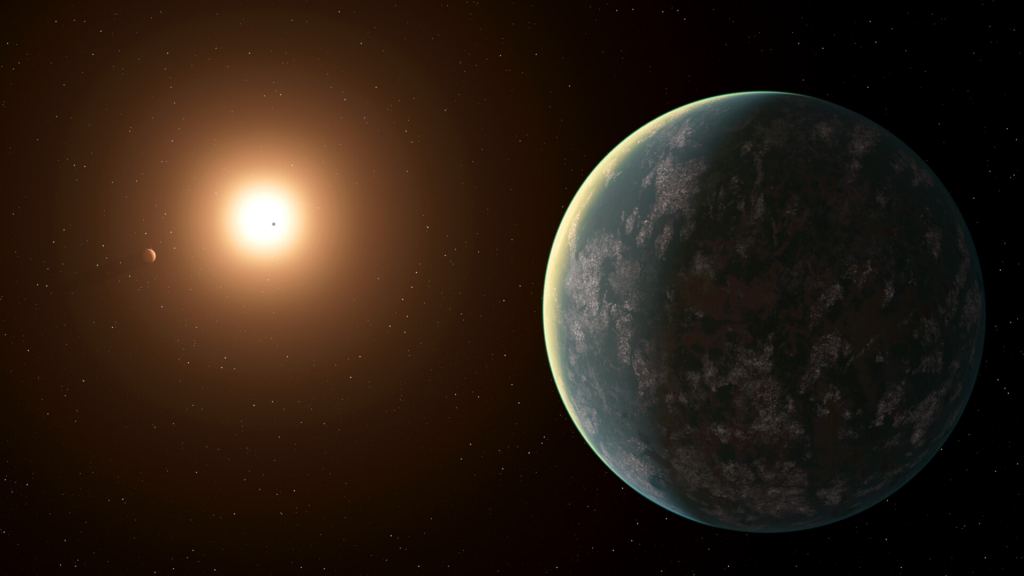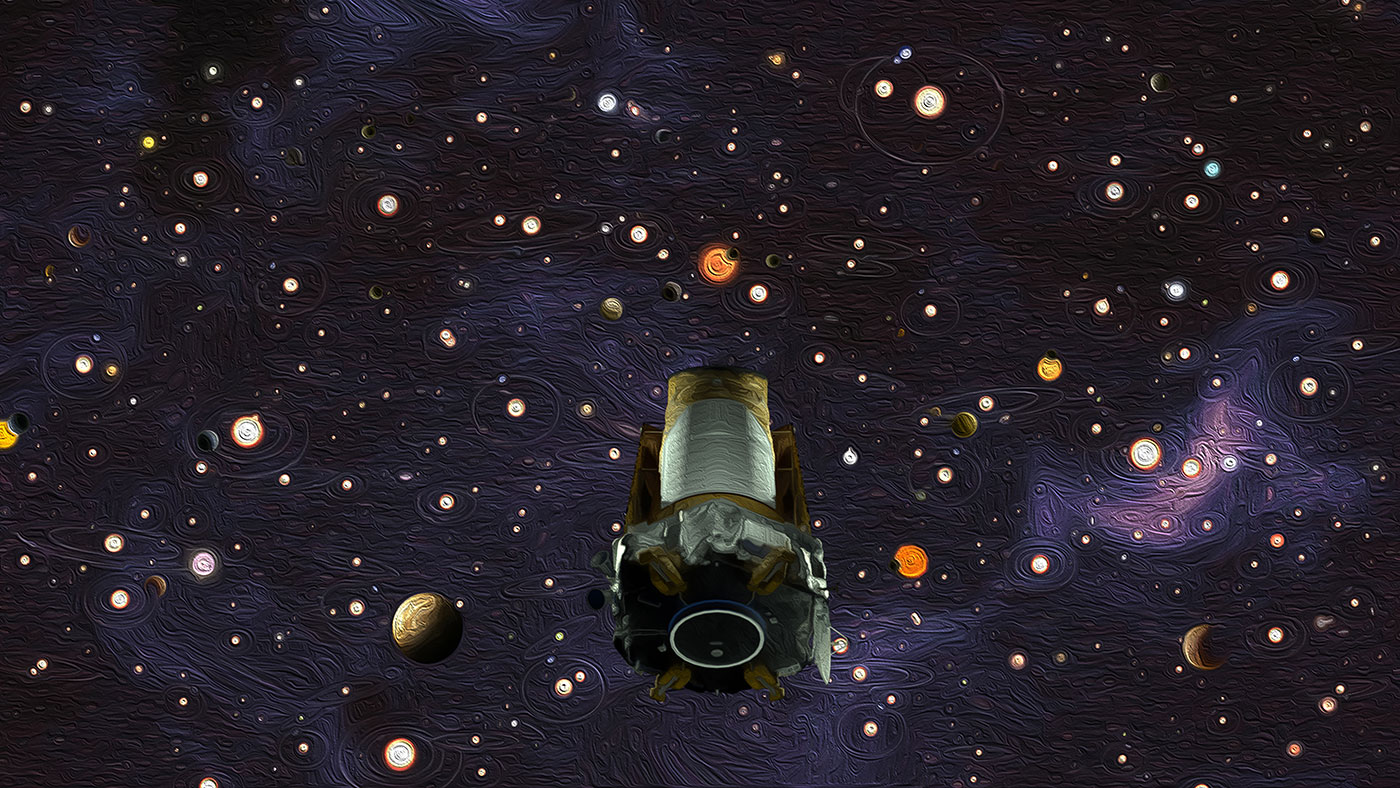In the past few decades, the study of exoplanets has grown by leaps and bounds, with 4296 confirmed discoveries in 3,188 systems and an additional 5,634 candidates awaiting confirmation. Because of this, scientists have been able to get a better idea about the number of potentially-habitable planets that could be out there. A popular target is stars like our own, which are known as G-type yellow dwarfs.
Recently, an international team of scientists (led by researchers from the NASA Ames Research Center) combined data from by the now-defunct Kepler Space Telescope and the European Space Agency’s (ESA) Gaia Observatory. What this revealed is that half of the Sun-like stars in our Universe could have rocky, potentially-habitable planets, the closest of which could be in our cosmic backyard!
The study that describes their findings, “The Occurrence of Rocky Habitable Zone Planets Around Solar-Like Stars from Kepler Data,” recently appeared online and will soon be published in The Astronomical Journal. The study was performed by NASA scientists who were joined by colleagues from universities, institutes, observatories, and laboratories from all around the world.

The Kepler mission, which was in operation from 2009 to 2018 (when it ran out of fuel) is responsible for the majority of exoplanet discoveries to date. Based on the number of planets it found, scientists now estimate that there could be more planets than stars in the Milky Way (the latest estimates say there are between 100 to 400 billion stars). As Steve Bryson, a researcher at NASA’s Ames Research Center and the lead author on the study, explained:
“Kepler already told us there were billions of planets, but now we know a good chunk of those planets might be rocky and habitable. Though this result is far from a final value, and water on a planet’s surface is only one of many factors to support life, it’s extremely exciting that we calculated these worlds are this common with such high confidence and precision.”
For the purposes of calculating how often potentially-habitable, Earth-like planets occur in our galaxy, the team focused on stars in Kepler‘s final data set that were similar to our Sun in terms of age (ca. 4.6 billion years) and temperature – plus or minus up to 815 °C (15,000 °F). They further looked at planets that were between 0.5 and 1.5 Earth radii, which are most likely to be rocky.
From this, the team found that there could be as many as 300 million potentially habitable planets in the Milky Way galaxy alone. What’s more, their results indicate that four of these exoplanets could be located within 30 light-years of the Solar System – the closest of which could be just 20 light-years from us. Overall, their analysis included a wide range of stars, each of which has its own particular properties that affect habitability.

This is typical of exoplanet and astrobiological research, where multiple overlapping characteristics are considered to determine potential-habitability. Combined with the limits of current telescopes, the resulting complexity of this research is why it is so difficult to calculate the number of potentially-habitable planets that could be out there.
For example, previous estimates of the frequency of potentially-habitable planets (aka. occurrence rate) failed to take into account the relationship between a star’s brightness and the kinds of light it emits – which is known as “Black Body Radiation“. Brighter, more massive stars emit radiation in the blue, UV, X-ray and gamma-ray parts of the spectrum, making them less of a safe bet for habitable planets.
Low-mass, faint stars emit most of their radiation in the red, infrared, or microwave and radiowave parts of the spectrum. Stars like our Sun, meanwhile, emit most of their radiation in the yellow-green part of the spectrum. To account for this relationship in their study, the research team combined data from the Kepler mission of planetary transits with astrometric data from the ESA’s Gaia mission.
Said Ravi Kopparapu, a scientist at NASA’s Goddard Space Flight Center and a co-author on the study:
“We always knew defining habitability simply in terms of a planet’s physical distance from a star, so that it’s not too hot or cold, left us making a lot of assumptions. Gaia’s data on stars allowed us to look at these planets and their stars in an entirely new way.”

The Gaia mission has spent the past seven years studying the positions, distances and motions of over 1 billion objects beyond our Solar System – including stars, exoplanets, quasars, comets, etc. The addition of this data provided information about the amount of energy a planet absorbs based on a star’s flux (the total amount of energy emitted in a certain area over a certain time).
The research team also took into account the role of exoplanet atmospheres, which have an effect on how much light is needed to allow liquid water on a planet’s surface. While the exact nature of this effect is still being researched, the team employed both conservative and optimistic estimates on the extent of habitable zones and found that 50% to 75% of Sun-like stars have rocky planets capable of hosting liquid on their surfaces.
As more exoplanets are discovered, and our capabilities for studying them is enhanced, astronomers are able to place tighter constraints on the likelihood of finding planets that could support life. This has led to the burgeoning field of astrobiology, which is specifically concerned with the search for extraterrestrial and extrasolar life. With any luck, we’ll soon have proof that we’re not alone in the Universe.
Further Reading: NASA


Habitability… May be Yes
Habitable…; Chances are very remote
We still lack technology to detect life from those kind of distances. We should first hone our technology to detect life on our earth from pluto like distances. If we succeed in that then only we can say that we can attempt a proper search.
Just now it is based on speculation from modeling.
That’s right, but it helps us narrow the search so we know where we should look when next-generation telescopes are online and can conduct direct imaging surveys.
No mention of the number of possibly habitable exo-moons. All those gas giants in habitable zones will likely have a lot of rocky moons in the .5 to 1.5 earth size, and some may be downright pleasant.